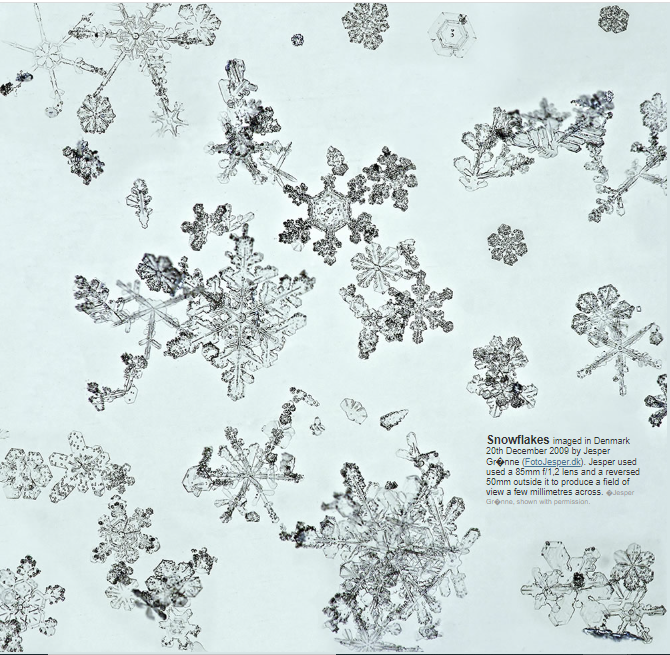Snowflake Symmetry
Snowflake Symmetry: Unveiling Nature's Masterpieces
Snowflakes are not only a symbol of winter wonderland but also a testament to the intricate beauty found in nature. These delicate ice crystals form in the atmosphere when water vapor freezes onto dust particles, creating unique and symmetrical shapes. The concept of snowflake symmetry has fascinated scientists and artists alike for centuries, leading to a deeper understanding of the underlying physics and the creation of stunning imagery capturing their mesmerizing patterns.
Understanding Snowflake Symmetry
The remarkable symmetry of snowflakes stems from the hexagonal structure of ice molecules and the conditions in which they form. As water vapor freezes, the molecules arrange themselves in a hexagonal lattice, resulting in six-sided ice crystals. This inherent symmetry is further enhanced as the crystal grows, with each branch and facet mirroring its counterparts due to the equal distribution of water molecules.
Types of Snowflake Symmetry
While six-fold symmetry is the most common, snowflakes can exhibit a range of symmetrical patterns. Some snowflakes may have three-fold or twelve-fold symmetry, depending on the environmental conditions during their formation. Factors such as temperature, humidity, and air currents play a crucial role in shaping the final structure of a snowflake.
The Role of Temperature in Snowflake Symmetry
Temperature variations within a cloud can lead to different types of snowflake symmetry. For instance, colder temperatures favor the growth of simple hexagonal plates or columns, resulting in less intricate patterns. On the other hand, slightly warmer temperatures promote the formation of dendritic snowflakes with branching arms, showcasing their mesmerizing complexity.
Snowflake Growth and Symmetry
As snowflakes fall through the atmosphere, they encounter varying temperature and humidity levels, causing their growth patterns to evolve. The growth process is highly sensitive to these environmental factors, leading to the development of unique branches and facets. Each snowflake's journey through the atmosphere is a testament to the ever-changing conditions it encounters, resulting in an astonishing variety of shapes and symmetries.
The Role of Atmospheric Conditions in Snowflake Symmetry
The atmospheric conditions in which snowflakes form greatly influence their symmetry. Calm air and low humidity levels promote the growth of well-defined, intricate snowflake structures. In contrast, turbulent air currents and high humidity can disrupt the delicate growth process, leading to irregular and asymmetrical shapes. The interplay between these atmospheric conditions and the growth patterns of snowflakes adds an element of unpredictability and uniqueness to each crystal.
Capturing the Beauty of Snowflake Symmetry
Photographers and scientists have dedicated themselves to capturing the mesmerizing beauty of snowflake symmetry. Using specialized macro lenses and techniques, they are able to magnify these tiny ice crystals, revealing the intricate details hidden within. By photographing snowflakes on a black background, the delicate structures stand out, showcasing their unique symmetrical patterns.
Appreciating Nature's Masterpieces
Snowflake symmetry is a testament to the intricate and awe-inspiring beauty found in the natural world. Each snowflake serves as a reminder of the complexity and perfection that can arise from seemingly simple processes. As we marvel at these delicate ice crystals, we gain a deeper appreciation for the wonders of nature and the remarkable symmetries that exist all around us.
The Importance of Snowflake Symmetry in Science
Beyond their aesthetic appeal, snowflakes and their symmetrical structures hold scientific significance. Scientists study snowflake symmetry to gain insights into crystal formation, molecular bonding, and atmospheric conditions. Understanding the physics behind snowflake symmetry can contribute to advancements in various fields, including materials science, meteorology, and climate research.
Preserving Snowflake Symmetry for Future Generations
As we continue to explore and appreciate snowflake symmetry, it is important to consider the impact of climate change on these delicate structures. Rising temperatures and changing atmospheric conditions can potentially alter the formation and symmetry of snowflakes. By raising awareness and taking steps to mitigate climate change, we can ensure that future generations will have the opportunity to witness and marvel at the breathtaking beauty of snowflake symmetry.

Snowflakes imaged in Denmark 20th December 2009 by Jesper Gr�nne (FotoJesper.dk). Jesper used used a 85mm f/1,2 lens and a reversed 50mm outside it to produce a field of view a few millimetres across. �Jesper Gr�nne, shown with permission.
Note: this article has been automatically converted from the old site and may not appear as intended. You can find the original article here.
Reference Atmospheric Optics
If you use any of the definitions, information, or data presented on Atmospheric Optics, please copy the link or reference below to properly credit us as the reference source. Thank you!
-
<a href="https://atoptics.co.uk/blog/snowflake-symmetry-2/">Snowflake Symmetry</a>
-
"Snowflake Symmetry". Atmospheric Optics. Accessed on April 19, 2024. https://atoptics.co.uk/blog/snowflake-symmetry-2/.
-
"Snowflake Symmetry". Atmospheric Optics, https://atoptics.co.uk/blog/snowflake-symmetry-2/. Accessed 19 April, 2024
-
Snowflake Symmetry. Atmospheric Optics. Retrieved from https://atoptics.co.uk/blog/snowflake-symmetry-2/.